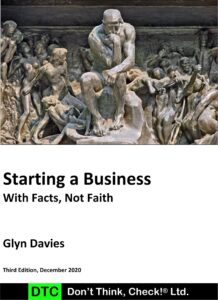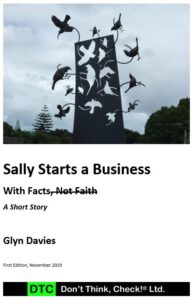From: Brands and Branding – What is a brand? by Tom Blackett, P13.
The Oxford American Dictionary (1980) contains the following definition:
Brand (noun): a trade mark, goods of a particular make: a mark of identification made with a hot iron, the iron used for this: a piece of burning or charred wood, (verb): to mark with a hot iron, or to label with a trade mark.
Similarly, The Pocket Oxford Dictionary of Current English (1934) says:
Brand. 1. n. Piece of burning or smouldering wood, torch, (literary); sword (poet.); iron stamp used red-hot to leave an indelible mark, mark left by it, stigma, trade-mark, particular kind of goods (all of the best bb.). 2. v.t. Stamp (mark, object, skin), with b., impress indelibly (is branded on my memory).
These two entries, in the order in which they list the definitions and in the definitions themselves, illustrate how, over 50 years, the primary use of the word “brand” now has a commercial application. However, the definitions also underline a common origin. Almost irrespective of how the word is used today, it has always meant, in its passive form, the object by which an impression is formed, and in its active form the process of forming this impression.
A [solution] identified by a distinctive and individual name or logo that distinguishes the offerings of one company from those sold by their competitors. ‘Brand’ has three varied meanings, all of them correct:
1. A named [solution];
2. A trademark;
3. Brand equity (Barwise & Meehan, 2011).
Marketing: Theory, Evidence, Practice 2nd Edition, Byron Sharp.
Brand, as a noun, can validly be used to mean at least three categorically different things:
1. A named product or service (as in “ Which brand did you buy? ” )
2. A trademark (as in “ Under which brand [i.e. name] shall we sell this new product? ” )
3. Brand equity (as in “ Will this new product extension strengthen or dilute the brand? ” ).
Beyond The Familiar: Long-term Growth Through Customer Focus and Innovation, Patrick Barwise and Seán Meehan, 2011.
The brand is the most important and sustainable asset of any organisation – whether a product- or service-based corporation or a not-for-profit concern – and it should be the central organising principle behind every decision and every action. Any organisation wanting to add value to day-to-day process and cost needs to think of itself as a brand.
Brands and Branding – Introduction by Rita Clifton, P2.
A brand is a perception in the prospect’s mind.
Brands are built in the mind, primarily with publicity.
The Fall of Advertising and the Rise of PR, Al Ries and Laura Ries.
Brands are a bundle of associations, of memories; when the memories are good, we feel affection for the brand.
Youtube.com, Shaun Smith.
Brands are a bundle of associations, of memories; when the memories are good, we feel affection for the brand.
Youtube.com, Shaun Smith.



